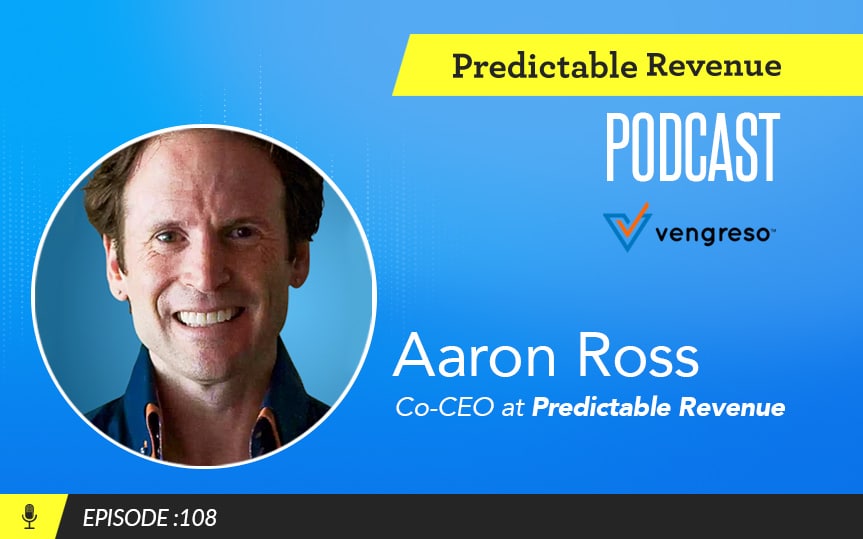How to Build a Killer Outbound Sales Team

Being successful in sales means you have a knack for juggling numerous responsibilities.
It doesn’t matter if you’re an experienced quota carrying rep or a novice sales development rep just getting your feet wet in the industry – doing this well means you’re constantly balancing important tasks, month after month and quarter after quarter.
The same is true of sales (and company) leadership. There are countless sales theories, processes, and initiatives one can implement, all in the hopes of getting your team to crush their numbers.
But which sales philosophy will work for you? Which process will your team respond to?
In most cases, it’s a combination of many different styles – every company is unique, so there is always some trial and error before you find the right mix. There is no silver sales bullet that will improve every aspect of a dynamic sales environment. But there are some proven and repeatable steps for companies to make money.
You just have to make those steps yours.
“After losing $5 million of investors’ money in a failed company I founded, and then working and learning at Salesforce, I realized there were predictable ways for companies to make money,” says Aaron Ross, on a recent edition of the Selling With Social Podcast.
“That’s what I’m interested in – whether it be for small companies or large companies and whether it be hundreds of thousands of dollars, millions, or even more.”
Why you need to separate inbound and outbound
The single biggest improvement any sales team can decide on, even more than implementing a CRM, is hiring specific inbound and outbound SDRs.
The inbound rep(s) will bridge the gap between sales and your marketing team because someone will be proactively working the leads marketing is bringing in. Your Account Executives, as well, will only be working qualified leads because of the work the SDRs are putting in. It’s a win-win.
Outbound, on the other hand, will be hunting (and capturing!) new incremental revenue for the company. New logos, dream whales, untapped divisions of existing clients – the effects of an effective outbound team can be felt in many areas.
“The beauty of outbound is that they have their targets and they go out and get them,” says Aaron.
“But, it’s important to note that the cycle is different. It can take 2 – 4 weeks to get new appointments.”
Common mistakes sales leaders make when building SDR teams
That unique outbound cycle is just one example of how significant the difference between inbound and outbound is, says Aaron.
Unfortunately, far too often sales leaders and company founders think the roles are the same and combine them to create hybrid SDRs that handle both inbound and outbound leads. The result of that mixing, however, is SDRs being forced to juggle too many tasks – building lists, prospecting, and closing, to name just three.
“With outbound, the mentality is proactive and the day is structured differently. On the surface they look similar – sending email, qualifying, and passing leads off,” says Aaron.
“But they are different, and need to be treated a such. If you want your outbound to be a high-functioning team, they need to be focused on it.” Not sure if Outbound sales will work for you? Let’s assess your status.
Another all-too-common mistake is lumping inbound and outbound metrics together on the same dashboard (even when the roles are separated). Remember: inbound and outbound operate on different schedules, take different levels of effort, and often represent different deal sizes.
The trouble with mixing metrics, adds Aaron, is that sales managers end up with an incomplete picture of what both inbound and outbound are contributing. And without a clear understanding of where each is succeeding or falling short, fixing any weaknesses will be difficult.
“Mixing metrics is a mistake that often happens at larger companies. So is focusing on the wrong metrics such as daily activities and not pipeline generated,” says Aaron.
“You have the right people in the right roles, and make sure you are measuring what you should be measuring.”
(Editor’s note: we had Travis Henry, Director of Inside Sales Operations at renowned Bay Area sales consultancy SalesSource, on the podcast recently to discuss the importance of maintaining a human touch in prospecting. You can read about our chat here, or listen to the whole interview here)
When a building an outbound SDR team doesn’t make sense
Despite the revenue a well-oiled outbound team can produce, SDRs are not a seamless fit in every company or industry. I know, I know…but it’s true.
For instance, companies that sell small deals (less than $10k annually) or that sell custom services such as web design often struggle getting SDR to produce because custom services are tough to describe and quantify in short outbound messaging.
Also, hyper-competitive verticals such as the VAR market or the advertising world can also be a tricky fit for SDRs because the vertical is already oversaturated and, in the case of advertising, too often dependant on legacy relationships with vendors. Replacing those often lengthy partnerships can be a significant challenge for any SDR team.
“It can still be done,” says Aaron.
“You can always try and establish outbound prospecting. But in a really tough niche, or with small deal sizes, it becomes much more difficult.”
For more of Aaron’s thoughts on outbound sales – including a further discussion on the mistakes companies leaders make when implementing outbound – check out the rest of his interview here.